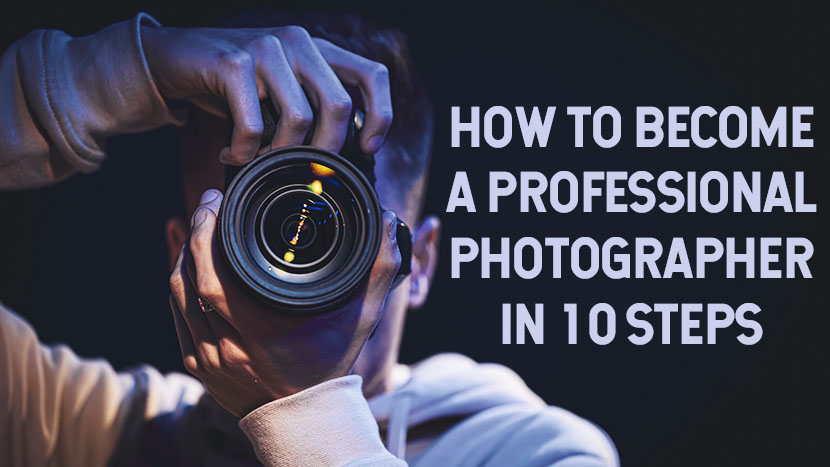Picture Perfect: A Comprehensive Guide to Starting Your Own Photography Business
The international photography services industry has experienced significant growth over the past few years. Not only have more people been experimenting with personal creative photography projects, but many have made the decision to turn their passion into a profession.
However, even though it’s a popular option, starting your own photography business can be a daunting task. But with the right strategy, you can set up a system that is altogether profitable, sustainable, and fulfilling.
In this article, we’ll go through a list of steps any amateur photographer can take towards building up a professional photography business from scratch to stardom.
10 Simple Steps You Can Take To Start Your Own Photography Business
Becoming a professional, hireable photographer is easier than ever before with such a wide technological reach to various audiences. But that doesn’t mean reaching your goal will come without effort. There are several important steps everyone needs to take to establish themselves as a serious professional photographer.
From obtaining a wider skillset to setting up a great-looking portfolio website, these steps will encompass everything you need to start a successful photography business.
Step 1: Expand and Refine Your Photography Skills
The very first step you should take in starting a photography business is to develop your skills as a visual artist and photographer. This can be accomplished through taking courses, attending workshops, reading educational books, and practicing photography as often as possible.
As you work through this development phase of your skills, you can create a solid portfolio of work that will serve your business now and in the future.
Step 2: Decide Your Niche(s)
The next thing to do is to determine your niche within the photography industry. There are so many different niches to choose from and some of the most popular ones include:
- Portrait photography
- Fine art photography
- Wedding photography
- Nature photography
- Event photography
- Real estate photography
You can choose multiple niches, but it is generally easier and more profitable to focus on just one or two. When deciding your niche(s), aim to choose one that best aligns with your natural interests and skills.
Step 3: Create a Business Plan
Developing a business plan is a crucial step in starting any business. Yours should include important details such as who your target market is, what pricing model you’re going to use, which marketing strategies you’ll obtain clients with, and financial projections. If those things sound foreign to you, don’t fret. There are plenty of photography business model templates and resources available online that can help you choose and set up a professional plan that suits your style and goals.
Step 4: Select a Business Structure and Officially Register Your Business
If you want to be a truly legitimate pro photographer, you’re going to have to choose the right legal structure for your business. The three main options are:
- Sole proprietorship
- LLC
- Corporation
These options come with their own pros and cons. Once you have decided on a structure, the next step is to register your business and obtain any necessary licenses and permits to work as a professional photographer. This will also protect you in the event of a copyright lawsuit.
Another thing to consider is pricing. You will need a pricing structure that is competitive, profitable, and appealing to your target audience. Some factors that might help you decide include equipment costs, your experience level, and the local market.
Step 5: Acquire the Right Software and Equipment
Every photographer needs access to high-quality hardware and software. Unfortunately, this part can be expensive—but you will need to invest in camera equipment, lighting gear, lenses, and other photography accessories.
You will also need good quality editing software such as Adobe Lightroom. There are many different options to consider, some of which are free. But the best ones usually come at a cost. In saying that, they are well worth it for the standard of quality they deliver!
Step 6: Create and Define Your Brand
Your brand is an important part of your business. You should develop a brand that represents your style and value. Once you’ve settled on your branding, ensure you use it to create a cohesive identity. This means learning how to incorporate your brand personality into all your marketing material and knowing how to make an invoice that is professional and follows your branding style. This professionalism will remind clients of why they’re doing business with you.
You should also create a website that showcases your portfolio, provides information about your services, and makes it easy for customers to contact you.
Step 7: Create a Website
Your website is the first place clients will go when they find out about your services. Keeping that in mind, it needs to represent your brand and your craft in a clear and professional way.
Luckily for present-day photographers, there are plenty of great portfolio websites available, and many of them are free. With a bit of web design training (or perhaps the help of a friend), you can create a website that is both functional and visually stunning.
Step 8: Create a Winning Marketing Strategy
Marketing is crucial for all business types, professional photographers included. It is essential that you factor the development of marketing strategies into your business plan so that you can reach your target audience and keep them interested in your work.
A lot of photographers use social media to market their services, but you could also use SEO, PPC campaigns, or even word of mouth to let people know you’re open for business.
Branding is also something to consider in this area. When setting up your social media profiles, for example, make sure to stay consistent in both visual theme, genre, and tone.
Step 9: Deliver High-Quality Photography to Clients
Last but not least, you should set your gaze on delivering high-quality service to your clients. This step includes providing great customer service, delivering photos punctually, and either meeting or exceeding client expectations.
Shoot For Success
Starting a photography business may not always be easy, but it can be extremely fulfilling. It requires hard work, dedication, and a consistent commitment to delivering high-quality photography services. Once you develop a good client base, things will naturally fall into place.
With the help of the steps in this comprehensive guide and a dedication to continuously improving your skills, anyone can build a successful photography business that is profitable and creatively stimulating.



































































































